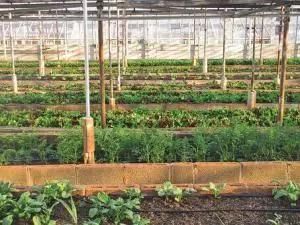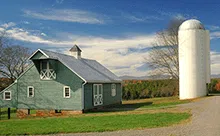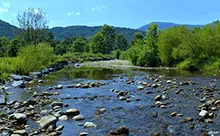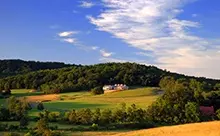
Regenerative Farming: A Solution to Climate Change?
Regenerative Farming: A Solution to Climate Change?

Global warming and the havoc climate change is wreaking on our communities is constantly in the news – but those stories about climate change rarely leave room for hope. Fortunately, regenerative farming is offering some much-needed relief, as its techniques have the potential to reverse climate change. Environmentally-conscious companies such as Cooks Venture, a poultry company founded on the principles of regenerative agriculture, are turning to regenerative farming as a way of combatting climate change – though farms of all sizes can do their part for the environment by adopting regenerative farming techniques! Ultimately, the wide-scale adoption of regenerative farming at every level would improve our air, water, and food in addition to our ecosystems themselves.
How Does Regenerative Farming Reduce Greenhouse Gases?
 Climate change poses an immediate threat to the viability of farmland, and droughts and unpredictable weather patterns have made food insecurity a rising concern. Farmers are experiencing this severe weather because greenhouse gases in the atmosphere including carbon dioxide trap heat from the sun, raising the Earth’s temperature. We produce more and more carbon dioxide every day, and these emissions show little sign of slowing. But the soil has the potential to store this excess carbon dioxide through regenerative farming techniques, removing it from the atmosphere so that it no longer functions as a greenhouse gas! Instead, the carbon dioxide is stored in the plants and soil where it functions as a critical nutrient.
Climate change poses an immediate threat to the viability of farmland, and droughts and unpredictable weather patterns have made food insecurity a rising concern. Farmers are experiencing this severe weather because greenhouse gases in the atmosphere including carbon dioxide trap heat from the sun, raising the Earth’s temperature. We produce more and more carbon dioxide every day, and these emissions show little sign of slowing. But the soil has the potential to store this excess carbon dioxide through regenerative farming techniques, removing it from the atmosphere so that it no longer functions as a greenhouse gas! Instead, the carbon dioxide is stored in the plants and soil where it functions as a critical nutrient.
The soil has tremendous potential to sequester carbon dioxide from the environment. In fact, after the oceans, soil is the world’s largest carbon sink! High levels of carbon dioxide in the oceans has already caused a variety of problems, though, leaving the soil as the only logical solution. While it would be amazing if the world suddenly stopped producing carbon dioxide today, this would not go far enough because of the amount of greenhouse gasses already in the atmosphere. Regenerative farming is one of the most practical, currently-available solutions we have to fighting climate change. And according to one estimate, we could reverse climate change if just 10 to 20% of farmland switched to regenerative farming techniques.
Regenerative Farming Techniques that Reduce Emissions
 Most of the techniques discussed are in no way new – in fact, many have been around since the early days of agriculture. But many modern farmers have discounted the value of these techniques in favor of methods sacrifice the long-term vitality of the farmland for short-term efficiency. Given the crushing effects of climate change on agricultural land, though, farmers are increasingly turning to these regenerative agriculture techniques to reclaim the health of their land.
Most of the techniques discussed are in no way new – in fact, many have been around since the early days of agriculture. But many modern farmers have discounted the value of these techniques in favor of methods sacrifice the long-term vitality of the farmland for short-term efficiency. Given the crushing effects of climate change on agricultural land, though, farmers are increasingly turning to these regenerative agriculture techniques to reclaim the health of their land.
- Adding composted organic waste to agricultural fields provides food for microbes in the soil. Healthy, living soil ecosystems mean that more micro-organisms are capturing and storing carbon.
- Planting perennials means that farmers don’t have to replant each year and destroy the soil or the extensive root systems.
- Rotating crops and planting cover crops ensures that soil ecosystems are protected year-round, which helps to build soil health.
- No-till and low-till methods ensure that the carbon already sequestered in the soil won’t be released into the atmosphere. These methods involve rolling leftover crops flat so that they become mulch that feeds soil microbes.
You might be wondering why regenerative farming techniques are necessary to trap carbon dioxide, when traditional farming also involves growing plants that trap carbon dioxide. Even though the plants store carbon dioxide, more carbon dioxide is released from the soil than is stored in the soil and plants when non-regenerative farming techniques are used. Those farming practices also degrade the soil and speed up desertification, which further reduces the carbon dioxide in the soil. In the end, just planting plants is not enough – but regenerative farming offers a promising path to a low-carbon future.
Browse Organic Farms for Sale















































